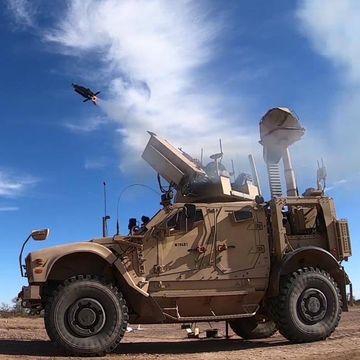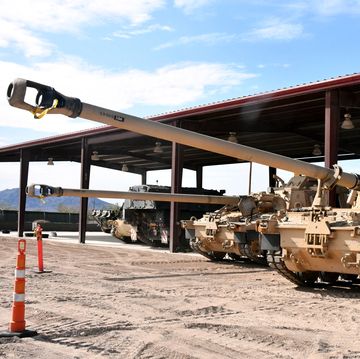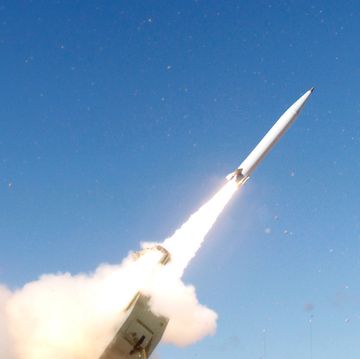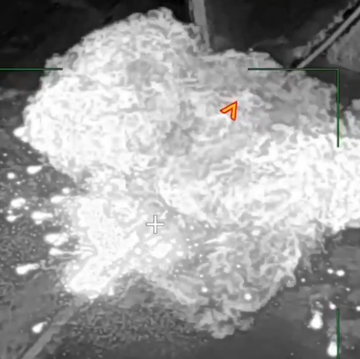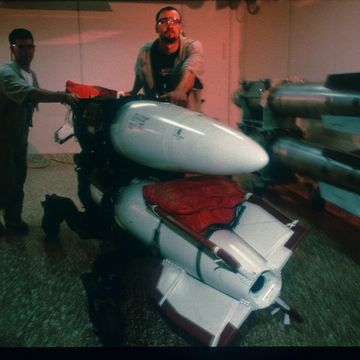Designed and built in the early 1940's, the supremely advanced B-29 Superfortress first flew over 70 years ago in September of 1944. Built by Boeing and based on the highly successful platform of the B-17 bomber, the B-29 became the largest aircraft operational during World War II, a combination of bleeding-edge tech and devastating firepower.
In addition to unprecedented features like a pressurized cabin and a dual-wheeled tricycle landing gear, the B-29 was equipped with a state of the art, computer-controlled remote fire system that operated five machine gun turrets.
It was a plane so advanced, we wrote in June 1945 about how one crew fought off 79 fighter planes, downing 7 of them, during a bombing run on Kyushu, Japan. Its weapons platform was so dominant that fighter escorts were no longer strictly necessary—as Major General Curtis LeMay put it simply: "These big boys can take care of themselves."
Remember that in 1944 the evolution of the electronic computer was in its infancy. Most computers of the time were designed to break Nazi war code and constructed of pulleys and vacuum tubes or mechanical relays to crunch data on rolls of punched paper. A single computer would encompass an entire room. Fortunately the Superfortress was such a massive aircraft that ample space was available for a new high-tech computing device.
Unlike the B-17 and other bombers before, gunners in the B-29 were no longer required to physically operate the heavy machine guns that sat in openings in the fuselage or dangling from precarious turret balls at the bottom or tail of the plane. With the pressurized cabin, the crew needn't be exposed to the the cold thin air encountered at high altitudes. Instead, the weapons could now be aimed optically by a targeting system that was controlled by analog electrical instruments. In the remote system, the gunner aimed the sight directly and the turret was driven electrically to follow the sight-position signal.
Five sighting stations were positioned throughout the aircraft. One in the nose and tail and three in plexiglass blisters in the center fuselage. Each sighting stations were equipped with separate computers dedicated to each gunners sight, increasing the weapon's accuracy by compensating for airspeed, gravity, temperature, humidity and even the lead in aim needed to pinpoint an enemy target. It was the revolutionary General Electric Central Fire Control system that directed the five remotely controlled turrets which were each armed with two .50 Browning M2 machine guns on each turret.
To establish proper calculations, a gunner would focus a series of dots from his gunsight onto an enemy target and follow it briefly. This would allow the computer to calculate range and speed of the enemy aircraft. Altitude, outside air temperature, and speed were all available to the computer to determine the lead required. A bomber flying at 250 mph at 30,000 feet will curve a bullet approximately 36 feet. The computer would also compensate for gravity. A .50-caliber bullet will drop almost 14 feet at a range of 800 yards. Add in the variable of a fighter plane closing at 400 miles per hour—which the system would also consider—allowed gunners to simply drop their sights directly on the target and fire away.
In addition to increasing the targeting accuracy, the computers also allowed a single gunner to operate two or more turrets simultaneously. The gunner in the nose sighting station acted as fire control officer, managing the distribution of turrets among the other gunners during combat.
This system of control transfer enabled gunners to take over control of more than one turret for a single gunsight. For every turret there was a gunner who had first call. The nose gunner was given first call on the upper and lower forward turrets. This gave him the greatest possible fire power with which to meet a frontal attack. His station was equipped with three units to coordinate the most effective use of the machine gun turrets:
- A control box with the necessary switches for operating the turrets and gunsight.
- A gunsight and controlling equipment.
- A set of transfer switches.
The gunner could select the IN position with the transfer switch, which would allow both top and bottom forward turrets to be operated simultaneously. Both guns in both turrets would then follow the single gunsight and fire together when the trigger was pressed. Moving the transfer switch to the OUT position would relinquish control of the top forward turret to the top gunner and the lower forward turret would become active for one of the side gunners to fire at will.
In addition to the transfer switch, the forward gunner needed to hold down the action switch while firing. If this is released, control would be given to the other gunners regardless of the transfer switch position. These action switches functioned as a "dead man's switch". If for some reason the fire control officer became incapacitated and could not physically move the transfer switches, the remaining crew would automatically be given control of his guns.
The gun control officer was also required to communicate verbally through the interphone system to alert other gunners of control transfer. Without this alert, a side or top gunner could potentially spray bullets into friendly aircraft if they happen to have their finger on the trigger.
Since the gunners did not have physical access to the cannons, the turret systems had to be smart and self-sustaining. Logic was built into the system so that fire was interrupted if the guns were ever pointed at parts of its own plane. The system would also physically maneuver the aim of the guns away from parts of the plane where crew were located. To further limit gunner needing to physically access the cannon, the system was also able to automatically reload in the event that ammunition became jammed.
The lower forward turret also the the ability to be stowed when not in use, similar to the B-24 Liberator. It was the forward sight gunners responsibility to rotate this gun toward the rear and shut off the appropriate switches. The gun would then automatically stow at the correct altitude when preparing to land which was required to maintain adequate clearance above the ground.
If you're curious to know more about what it took to operate the weapons on a B-29 Superfortress you can study up with the complete WW II-era Bombardier's Information File, archived in its entirety for your reading pleasure.










